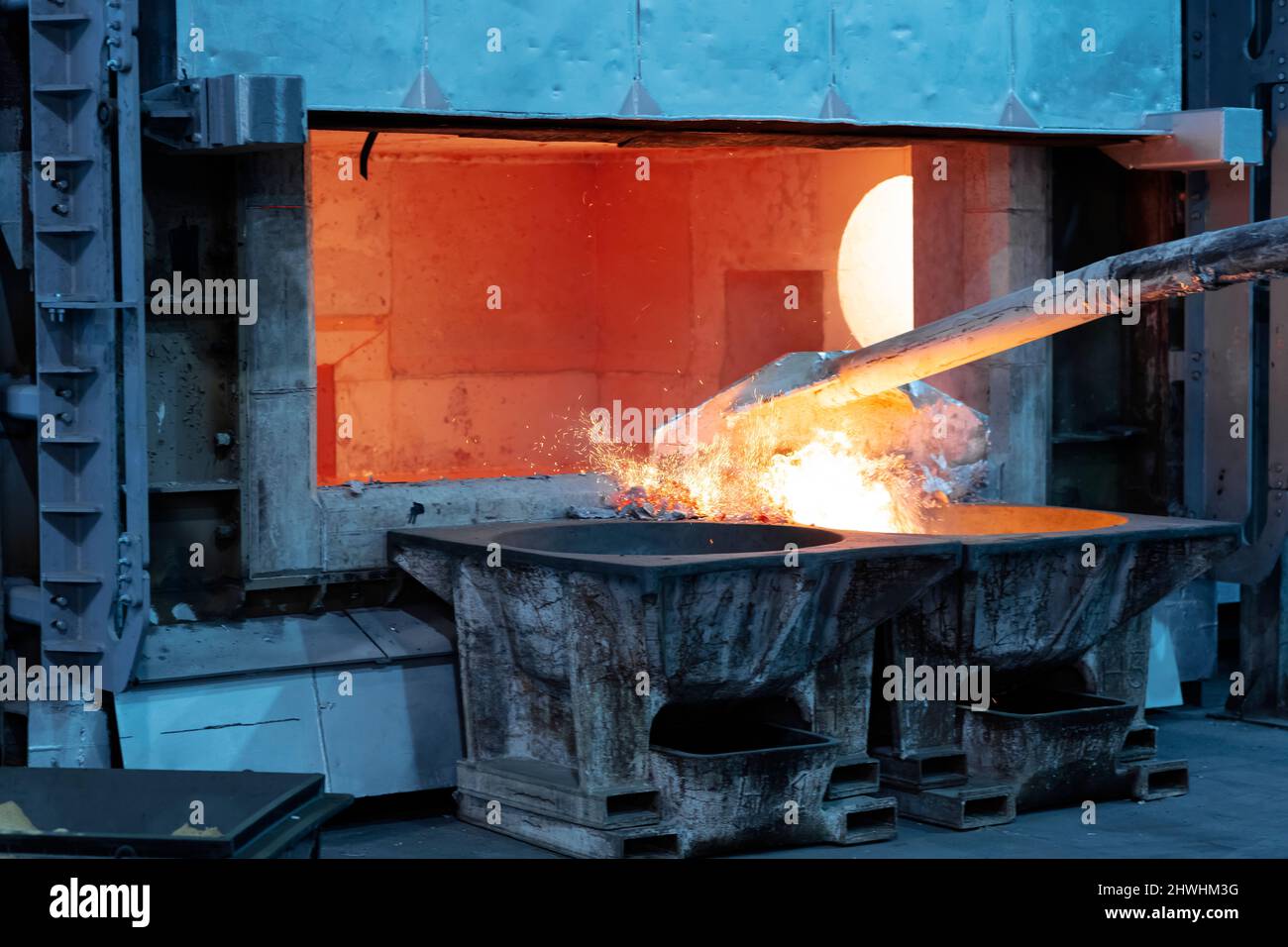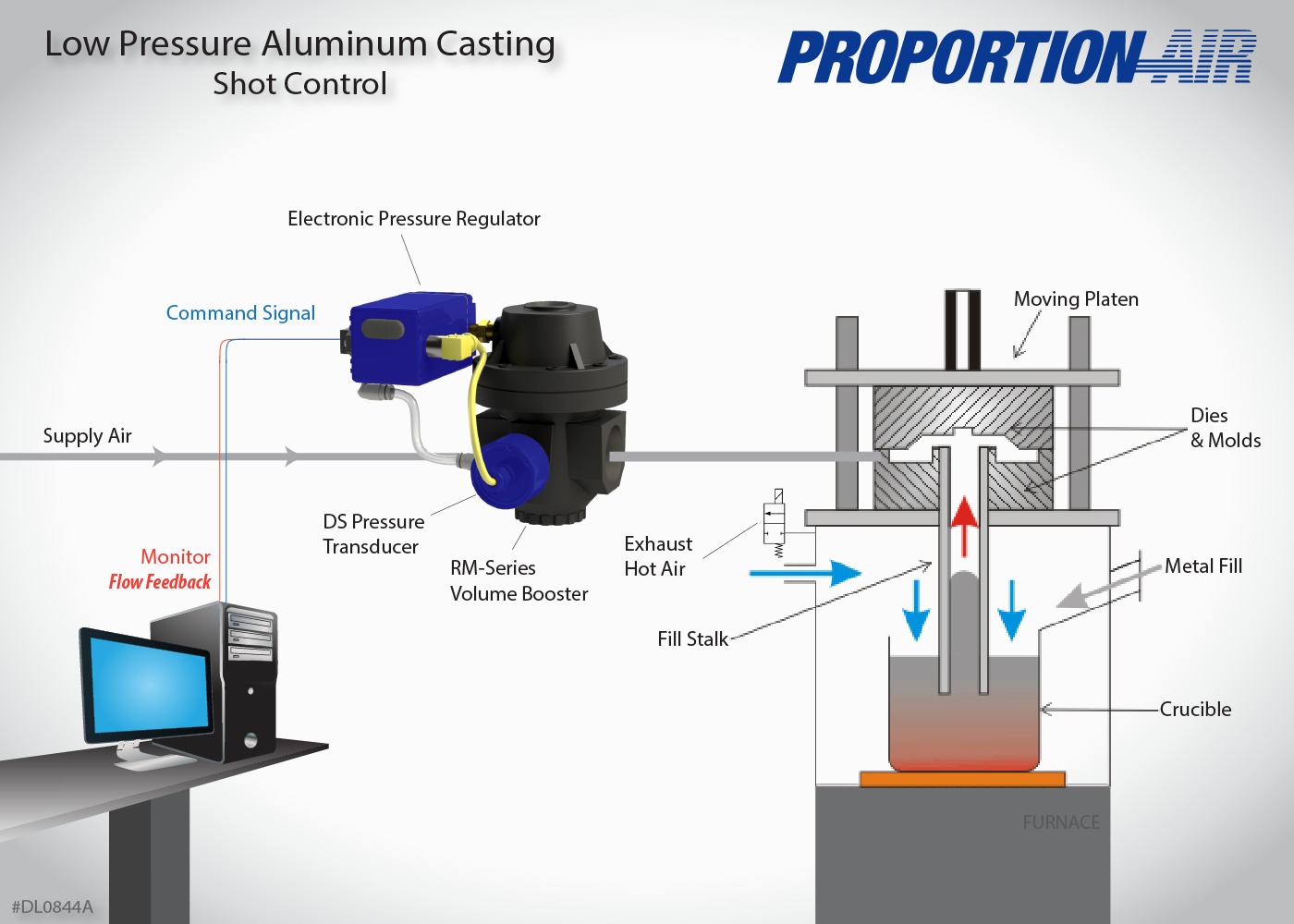Aluminum Foundry Wisconsin drives sustainable casting practices
Exactly How Aluminum Foundry Contributes to Innovations in Aerospace Engineering
Aluminum foundries are indispensable to developments in aerospace design. They generate lightweight, high-strength parts that are crucial for modern airplane. Through innovative casting techniques, these factories create complicated geometries that enhance architectural honesty. Additionally, the growth of exceptional Aluminum alloys sustains the industry's concentrate on fuel effectiveness and sustainability. Challenges remain in the manufacturing process. Recognizing these elements discloses the profound impact of Aluminum on aeronautics's future.
The Importance of Lightweight Materials in Aerospace Style
As the aerospace market remains to progress, the significance of light-weight materials comes to be increasingly apparent. The demand for effectiveness and sustainability drives designers to focus on making use of materials that minimize general weight without compromising structural stability. Light-weight materials, especially Aluminum, play an essential function in boosting gas performance, boosting haul capability, and enhancing the general performance of aircraft.
The integration of these materials allows for cutting-edge layouts, making it possible for suppliers to develop even more aerodynamic forms that can stand up to severe problems. The decrease in weight not only lowers functional expenses but likewise adds to a lowered ecological impact, lining up with worldwide efforts toward sustainability in air travel.
Advanced Spreading Techniques in Aluminum Foundries
Advanced casting strategies in Aluminum factories play an important duty in aerospace engineering by allowing the production of exact and lightweight components. Innovations in mold and mildew style and precision spreading processes are essential in achieving excellent efficiency and structural integrity. In addition, the growth of lightweight alloys boosts the general efficiency and performance of aerospace applications.
Ingenious Mold And Mildew Design
Cutting-edge mold and mildew design plays a vital role in the effectiveness and effectiveness of Aluminum shops, specifically within the aerospace industry. By leveraging sophisticated products and techniques, modern mold and mildews can be crafted to withstand heats and pressures, guaranteeing peak efficiency throughout the casting process. These layouts typically include complicated geometries that permit for the manufacturing of lightweight yet structurally sound parts, crucial for aerospace applications. Furthermore, making use of computer-aided design (CAD) software program facilitates exact modeling, enabling foundries to mimic and improve mold styles before physical manufacturing begins. This not just enhances the high quality of actors components but additionally reduces waste and lead times, bring about substantial cost savings. Overall, ingenious mold and mildew layout is a cornerstone of development in Aluminum Foundry technology for aerospace engineering.
Precision Casting Procedures
The performance of cutting-edge mold styles seamlessly integrates with accuracy casting procedures, which are essential for generating high-grade Aluminum components in aerospace design. These procedures, consisting of sand spreading, die casting, and investment spreading, assure the production of intricate geometries with tight tolerances. Advanced techniques like vacuum spreading and pressure die casting improve the honesty and surface finish of the final items. Precision spreading decreases product waste while taking full advantage of the mechanical properties of Aluminum, crucial for aerospace applications. Additionally, employing real-time monitoring and progressed simulation tools throughout the spreading process enables immediate adjustments, causing enhanced quality control. Jointly, these accuracy spreading procedures setting Aluminum foundries at the center of aerospace technology, sustaining the market's demand for integrity and efficiency.
Lightweight Alloy Advancement
As aerospace engineers seek to enhance gas performance and efficiency, lightweight alloy development ends up being a necessary emphasis in Aluminum factories. These foundries utilize sophisticated spreading techniques to produce alloys that provide remarkable strength-to-weight ratios. Technologies in alloy structure, consisting of the incorporation of components like lithium and magnesium, allow the manufacturing of materials that endure severe conditions while decreasing total aircraft weight. Methods such as die spreading and investment spreading facilitate the precision production of intricate shapes, which are essential for aerospace applications. In addition, continuous study aims to maximize these alloys for boosted mechanical homes and raised toughness. By prioritizing lightweight alloy development, Aluminum factories considerably contribute to the evolution of aerospace design, leading the way for a lot more sustainable and effective aircraft layouts.

Enhancing Architectural Integrity With Aluminum Components
Aluminum elements supply substantial benefits in boosting architectural stability within aerospace engineering. Their lightweight nature adds to general effectiveness while preserving strength, which is vital for aircraft performance. In addition, the tension resistance residential properties of Aluminum aid guarantee the resilience and reliability of aerospace frameworks under numerous functional conditions.
Light-weight Material Benefits
While conventional products often endanger weight for toughness, utilizing Aluminum parts in aerospace engineering supplies significant benefits in structural honesty. Aluminum's lightweight nature contributes to total style efficiency, enabling even more streamlined aircraft that eat less gas, consequently boosting sustainability. The product's excellent strength-to-weight proportion warranties that elements maintain longevity without adding unnecessary mass. This top quality fosters boosted performance and agility in trip, along with optimized haul capabilities. In addition, Aluminum's resistance to corrosion lengthens the life expectancy of aerospace structures, minimizing maintenance expenses and boosting security. As suppliers progressively adopt Aluminum alloys, the aerospace sector experiences a transformative shift in the direction of more efficient and reliable engineering remedies that prioritize both performance and environmental duty.
Tension Resistance Characteristics
Although various materials possess one-of-a-kind residential properties, Aluminum's outstanding anxiety resistance stands out as an important consider boosting the structural integrity of aerospace elements. This resistance plays a critical duty in ensuring that aircraft can endure different functional anxieties, including tiredness, influence, and ecological problems. Aluminum alloys, particularly engineered for aerospace applications, display high tensile stamina while maintaining light-weight features, enabling designers to develop much more efficient frameworks - Aluminum Foundry. In addition, the capacity of Aluminum to endure cyclic loading without substantial contortion adds to the longevity and reliability of aerospace parts. As innovations continue in Aluminum Foundry strategies, the growth of stress-resistant Aluminum elements promises more enhancements in efficiency, security, and efficiency across the aerospace sector, solidifying Aluminum's duty as a recommended material in modern-day design
Gas Performance Improvements Driven by Aluminum Innovations
As the aerospace sector looks for to improve gas effectiveness, ingenious uses of Aluminum have become a crucial service. Aluminum's light-weight nature click over here significantly lowers aircraft weight, permitting for lower fuel intake during trip. This reduction in weight is vital, as even tiny decreases can bring about significant improvements in total fuel economic situation.
Advanced Aluminum alloys, created for enhanced strength and durability, allow manufacturers to produce parts that keep architectural stability while decreasing mass - Aluminum Foundry. In addition, the integration of Aluminum in airframes and engine elements helps with boosted aerodynamics, contributing to lowered drag and enhanced effectiveness
The adoption of Aluminum in aerospace not only satisfies the need for fuel-efficient style yet also lines up with governing pressures for lower exhausts. As these developments remain to evolve, they play a considerable duty in setting new criteria for fuel efficiency, making sure that the aerospace field can fulfill expanding economic and environmental difficulties.

The Role of Aluminum in Sustainable Air Travel Practices
The boosting emphasis on sustainable aeronautics techniques has actually positioned Aluminum as an important material in the mission for greener airplane style. Understood for its lightweight residential or commercial properties, Aluminum considerably minimizes aircraft weight, leading to lower fuel usage and discharges. Its recyclability even more enhances its sustainability profile, as Aluminum can be recycled forever without loss of top quality. This particular sustains a circular economic situation within the air travel industry, minimizing waste and source deficiency.
Improvements in Aluminum link alloys have boosted their stamina and rust resistance, allowing for longer solution life and minimized maintenance demands. These advancements assist in the advancement of a lot more efficient airplane frameworks, contributing to overall sustainability initiatives. Furthermore, Aluminum's thermal conductivity plays an important role in energy-efficient layouts, boosting systems such as heat exchangers. Collectively, these qualities underscore Aluminum's essential duty beforehand lasting air travel, straightening with global efforts aimed at decreasing the ecological influence of flight.
Obstacles Faced by Aluminum Foundries in Aerospace Manufacturing
While Aluminum factories play an essential function in aerospace production, they face considerable difficulties that can impact production effectiveness and top quality. One significant challenge is the strict quality assurance standards needed in the aerospace market. Any defect can compromise safety and performance, necessitating extensive assessment procedures that expand manufacturing timelines. In addition, foundries commonly emulate fluctuating basic material expenses, which can impact pricing and profitability. The complexity of Aluminum alloys utilized in aerospace applications additional complicates the manufacturing procedure, as precise formulas are vital for achieving desired mechanical buildings. Moreover, skilled labor lacks impede the capability to preserve premium manufacturing degrees. Ecological guidelines impose restrictions on exhausts and waste administration, needing foundries to spend in sustainable techniques, which can be cost-prohibitive. These aspects collectively create a landscape where Aluminum shops need to constantly adapt to fulfill the developing demands of aerospace production while making certain safety and security and compliance.
Future Patterns in Aluminum Applications for Aerospace Design
With advancements in modern technology and enhancing demands for performance, the future of Aluminum applications in aerospace engineering is positioned for considerable improvement. The integration of cutting-edge Aluminum alloys and composites is anticipated to improve strength-to-weight proportions, leading to even more fuel-efficient airplane styles. Additionally, improvements in additive production methods will enable the manufacturing of complicated Aluminum frameworks that were previously difficult, optimizing efficiency and decreasing waste.

Sustainable methods will certainly play a vital duty, with a growing emphasis on reusing Aluminum to reduce ecological effect. The aerospace sector is likely to welcome smarter making processes, such as automation and expert system, ensuring better and accuracy in Aluminum components. Furthermore, partnerships between Aluminum foundries and aerospace companies will promote study and growth, paving the way for new applications that meet the stringent demands of contemporary aerospace design - Aluminum Foundry. Generally, the future looks assuring for Aluminum's duty fit the skies
Regularly Asked Inquiries
What Are the Ecological Effects of Aluminum Production in Aerospace?
The ecological influences of Aluminum production in aerospace consist of considerable energy consumption, greenhouse gas exhausts, and environment interruption. Additionally, mining procedures can bring about dirt deterioration and water contamination, raising concerns concerning sustainability and eco-friendly balance.
Just How Does Aluminum Contrast to Other Products in Aerospace Applications?
Aluminum supplies an one-of-a-kind mix of lightweight homes, corrosion resistance, and cost-effectiveness contrasted to various other products. Its high strength-to-weight proportion makes it especially useful for aerospace applications, boosting fuel performance and overall efficiency in aircraft layout.
What Certifications Do Aluminum Foundry Employees Need for Aerospace Projects?
Aluminum Foundry employees require specific training in metallurgy and spreading methods, along with knowledge of aerospace market standards. Qualifications in high quality control and safety and security methods are additionally vital to guarantee conformity with rigorous aerospace job needs.
Exist Any Kind Of Safety Problems With Making Use Of Aluminum in Aerospace Engineering?
Security problems regarding Aluminum in aerospace engineering consist of susceptibility to anxiety, exhaustion, and corrosion fractures. Appropriate therapy and alloy option are necessary to mitigate these risks, making sure architectural honesty and total safety and security in aerospace applications.
Just How Does Aluminum Recycling Advantage the Aerospace Market?
Aluminum reusing substantially profits the aerospace sector by reducing product expenses, reducing ecological effect, and preserving energy. This sustainable technique boosts the industry's efficiency while promoting making use of light-weight, high-performance components in aircraft manufacturing.
Advanced spreading techniques in Aluminum shops play a vital role in aerospace engineering by enabling the production of exact and lightweight parts. Ingenious mold layout content plays a crucial duty in the effectiveness and effectiveness of Aluminum foundries, particularly within the aerospace market. As aerospace designers seek to boost gas effectiveness and performance, lightweight alloy growth comes to be an essential emphasis in Aluminum factories. Aluminum alloys, especially crafted for aerospace applications, display high tensile strength while keeping lightweight attributes, making it possible for designers to develop much more effective structures. Collaborations in between Aluminum foundries and aerospace firms will promote study and development, leading the way for brand-new applications that meet the rigorous needs of contemporary aerospace design.